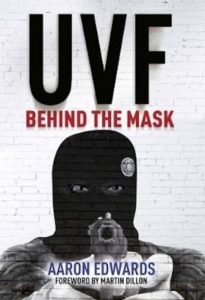Loyalist terror in Northern Ireland
[Recensie] With the signing of the Good Friday Agreement in 1998 most people in Europe presumed the civil strife between loyalist and nationalist paramilitaries in Northern Ireland was over. On the Emerald Isle itself people just hoped for the best. Sectarian killing didn’t end then, although the very fact that there had been signed an agreement was evidence the road to peace was chosen. However, it was not until 2005 that the Irish Republican Army (IRA), the militant wing of the nationalist movement, ended its armed struggle and decommissioned. The loyalist paramilitaries of the Ulster Volunteer Force (UVF), were even slower. In 2009 they stated to have disarmed. In the decades preceding these operations, the IRA and UVF were instrumental in maintaining the spiral of sectarian violence that dominated Northern Irish society from the late 1960’s to the 1990’s. Books on the so-called Troubles are numerous but they mostly describe the political situation and touch on the actions of Loyalists and Nationalists predominantly superficial. Besides, most of the literature focuses on the nationalist side of the struggle. Edwards instead offers an insight investigation into the loyalists’ most secretive and perhaps most ruthless organisation; the Ulster Volunteer Force.
Edwards traces back the shadowy beginnings of the organisation in the mid-1960’s. He shows how from the moment the first attacks on Catholics began in 1966, the UVF acted out of the paranoid idea that the IRA was planning a republican government take-over. Not wholly unimagible when thinking of the IRA’s border campaign of the 1950’s. However, in reality the Republican organisation was all but dead and buried around the time the UVF started its attacks. In response of the growing violence from loyalist side, the IRA resurged and the UVF’s fear of renewed republican activity became a self-fulfilling prophecy.
As a Protestant, Edwards knew and knows many of the UVF’s leaders and former frontmen personally. Therefore, besides resting on a steady base of literature research, his study is based on a lot of interviews and first-hand accounts. Because of the historical proximity of the events described in the book, it was inevitable to keep identities secret of some persons that make their appearance in the text. The casualness and normality with which the paramilitaries picked their victims and murdered them in cold blood, is perhaps most chilling in reading through the history of the organisation. The murderers were ordinary working-class guys, but instead of watching tv after the workday was over, they roamed the street looking for people to murder. Because of his background in the workingclass Protestant community, Edwards is able to piece together a very detailed story of the Ulster Volunteer Force, the way it worked and why its members behaved as they did.

The author rightly lays the blame for the unleashing of sectarian violence on fundamentalist priests like Ian Paisley, internationally infamous for his implacable stance towards anything and anyone not deeply conservative and sectarian Protestant. Men like Paisley fed and stirred up the hatred and division in the communities of Northern Ireland. In his book, Edwards sheds light on a lot of foggy violent events that took place during the Troubles. Some of his disclosures have been rumored for some time, such as the whisper that Lenny Murphy, one of the Shankill Butchers, was betrayed by fellow loyalist paramilitaries. His whereabouts were passed on tot he IRA, who then acted and killed Murphy before his girlfriend’s house in 1982.
Following the path of the UVF through its history into the modern day, Edwards recalls how besides fighting the nationalist enemy, rivalry with other Protestant paramilitary organisations also led to numerous killings. At times, for the UVF the loyalist Ulster Defence Association (UDA) was as bitter an enemy as was the IRA. Eventually some of the UVF’s leaders come to repent their horrific deeds of the past while sitting out their prison sentences. With their release, Billy Mitchell and Gusty Spence, to name some of the most prominent examples, began the work towards the first steps on the road to peace. Edwards surely has done a remarkable job in bringing the machinations of a paramilitary organisations under such close scrutiny as he did. The outcome is very rewarding, and this book is definitely a huge asset for the historiography of the Troubles, especially of the lesser-known loyalist side of it.
—
Eerder verschenen op Hereditas Nexus
